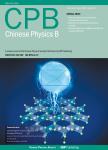Pulse chirping effect on controlling the transverse cavity oscillations in nonlinear bubble regime
Pulse chirping effect on controlling the transverse cavity oscillations in nonlinear bubble regime作者机构:Laser and Optic Institute Nuclear Science and Technology Research Institute Tehran Iran physics and Accelerator School Nuclear Science and Technology Research Institute Tehran Iran Department of Energy Engineering and Physics Amirkabir University of Technology P. O. Box 15875-4413 Tehran Iran School of Mathematics and Physics The Queen's University of Belfast BT7 INN Belfast United Kingdom
出 版 物:《Chinese Physics B》 (中国物理B(英文版))
年 卷 期:2017年第26卷第2期
页 面:313-319页
核心收录:
学科分类:080901[工学-物理电子学] 0809[工学-电子科学与技术(可授工学、理学学位)] 08[工学] 080401[工学-精密仪器及机械] 0804[工学-仪器科学与技术] 0803[工学-光学工程]
主 题:bubble regime plasma wake field positively chirped laser pulse
摘 要:The propagation of an intense laser pulse in an under-dense plasma induces a plasma wake that is suitable for the acceleration of electrons to relativistic energies. For an ultra-intense laser pulse which has a longitudinal size shorter than the plasma wavelength, λp, instead of a periodic plasma wave, a cavity free from cold plasma electrons, called a bubble, is formed behind the laser pulse. An intense charge separation electric field inside the moving bubble can capture the electrons at the base of the bubble and accelerate them with a narrow energy spread. In the nonlinear bubble regime, due to localized depletion at the front of the pulse during its propagation through the plasma, the phase shift between carrier waves and pulse envelope plays an important role in plasma response. The carrier–envelope phase(CEP) breaks down the symmetric transverse ponderomotive force of the laser pulse that makes the bubble structure unstable. Our studies using a series of two-dimensional(2D) particle-in-cell(PIC) simulations show that the frequency-chirped laser pulses are more effective in controlling the pulse depletion rate and consequently the effect of the CEP in the bubble regime. The results indicate that the utilization of a positively chirped laser pulse leads to an increase in rate of erosion of the leading edge of the pulse that rapidly results in the formation of a steep intensity gradient at the front of the pulse. A more unstable bubble structure, the self-injections in different positions, and high dark current are the results of using a positively chirped laser pulse. For a negatively chirped laser pulse, the pulse depletion process is compensated during the propagation of the pulse in plasma in such a way that results in a more stable bubble shape and therefore, a localized electron bunch is produced during the acceleration process. As a result, by the proper choice of chirping, one can tune the number of self-injected electrons, the size of accelerated bunch



